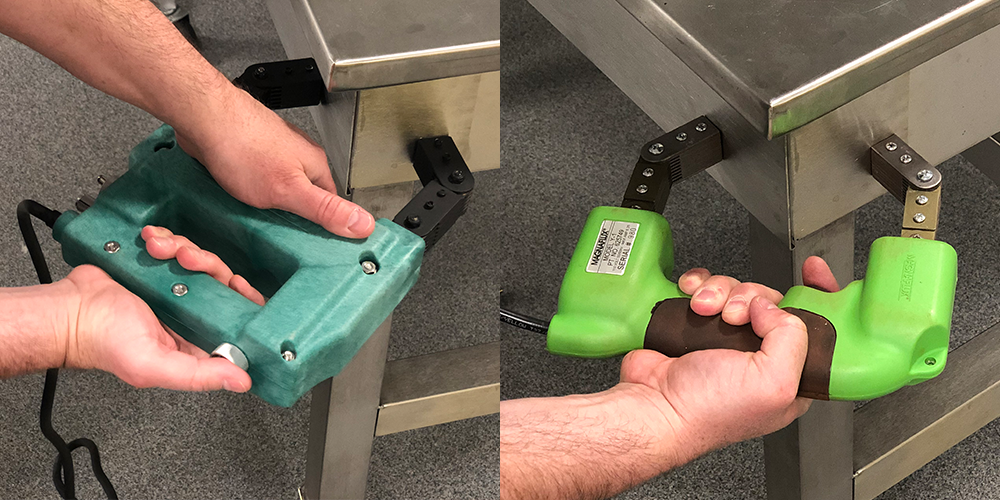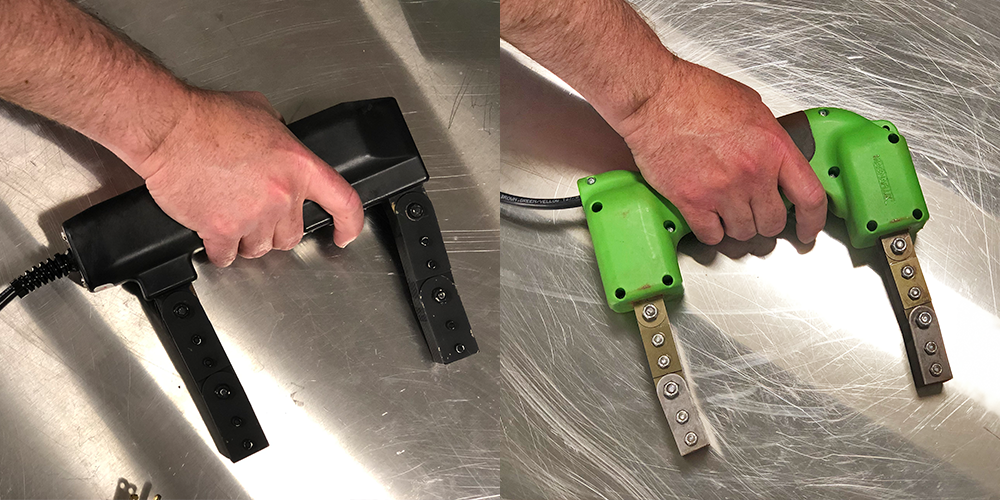Yokes are some of the most versatile and trusted pieces of MPI equipment when you are out inspecting in the field. They also come in a variety of shapes and sizes, which means some yokes are more suited to your needs than others.
Choosing the right yoke makes a tremendous difference to the inspector who is going to be using it over 8 hours a day under difficult conditions. Here are five things to consider when choosing the right yoke for the job.
How heavy does the yoke feel in your hand? Try holding it for more than a few minutes and ask yourself the same question.
Not all yokes are weighted equal; some yokes are almost twice as heavy as others. When you are using a yoke all day, a heavier yoke can slow you down by 15% and cause fatigue. This is especially true if you are inspecting surfaces overhead or in difficult to reach areas.
Another factor to check is if the weight is equally distributed across the yoke. Is the yoke bottom heavy? That could make it difficult to inspect sideways. Some yokes can cause wrist strain when used at awkward angles. Others may require the use of two hands to hold the yoke steady – effectively needing a second operator to disperse the powder.
 Figure: Differences between a bottom-heavy yoke vs a balanced yoke.
Figure: Differences between a bottom-heavy yoke vs a balanced yoke.
A bottom-heavy yoke essentially becomes cantilevered when holding sideways, which requires more force at the handle to stabilize. A lightweight, balanced yoke is the best choice if you are inspecting for longer periods, and for overhead or hard-to reach areas.
How does the yoke feel in your hand? Is it too big? Too small? Are there sharp edges that could get annoying over time? How does the trigger feel? Is it positioned in the right place?
These are all questions that address how comfortable your work experience is going to be with the yoke in your hand.
The ideal yoke allows the inspector to comfortably wield it with one hand, with a body that allows the fingers to grip it tightly and a trigger that is correctly positioned for use in all orientations.

 Figure: How the shape of the yoke affects the grip.
Figure: How the shape of the yoke affects the grip.
How long does the yoke need to last? Is it just for one job? Or do you need a yoke that will last a few years?
Choosing a yoke that can survive the harshness of various tough environments can be the difference between a smooth job and a frustrating experience.
If you want to keep the yoke for a while, choose a yoke that you can easily service yourself. Be mindful of the most common points of failure for yokes – the cord and the trigger. Make sure the yoke you are investing in has a cord and trigger you can replace or repair yourself.
How easily does the yoke pass the 10-lb test? Does it pass the same test after a day of work? What about after a year?
Most new yokes today meet ASTM requirements for magnetizing power. However, some yokes can hold their magnetizing ability for longer than other yokes.
Before any job, ensure the yoke you are using can still lift a 10-pound weight. Check for and replace rounded feet on the yoke to make sure you will always get good contact. Dual core yokes with coils above the yoke legs tend to be stronger than single core yokes with the coil in the handle.
What type of indications do you need to find? Do you want to see sub-surface indications? Or only surface indications?
It is easy to overlook this small detail but adding DC power to a yoke means adding substantially more bulk and weight. If all you really require is to see surface indications, opt for an AC yoke instead.
There are a lot more options today in the world of yokes than there used to be. Gone are the days when operators had to live with a yoke that was uncomfortable - and sometimes dangerous - to use.
When choosing your next yoke, consider the factors you learned today. Pick up a few different ones to see how each feel in your hand, and then imagine how they will feel after a full day's work. Think about which features you really need, and what you can live without. Consider how long you would like the yoke to last. With these factors in mind, you will pick the yoke that is best for you.
Published June 4, 2019
Faraday Road, South Dorcan Industrial Estate
Swindon, Wiltshire, SN3 5HE, UK
Telephone: +44 (0)1793 524566
Contact Magnaflux Customer Service
Magnaflux, A Division of ITW Limited VAT number: GB 531 8325 59